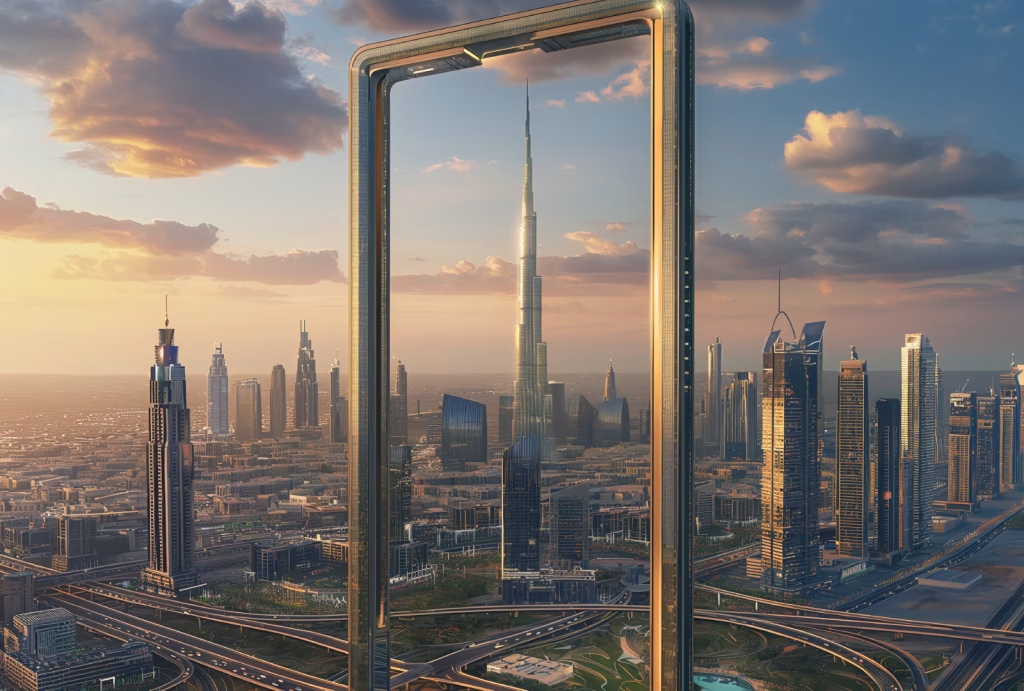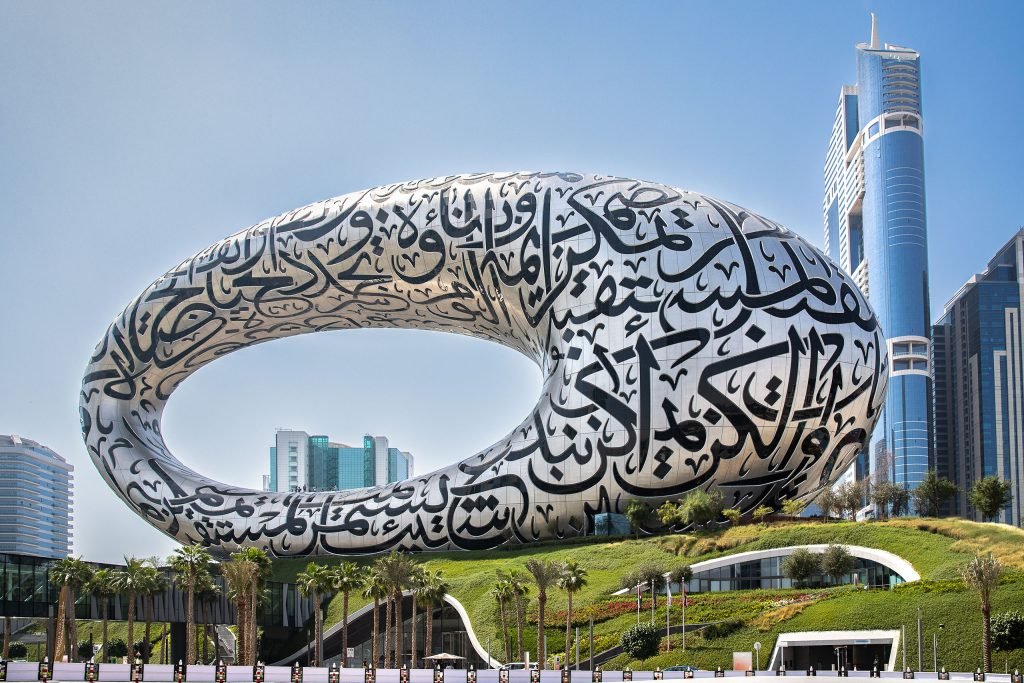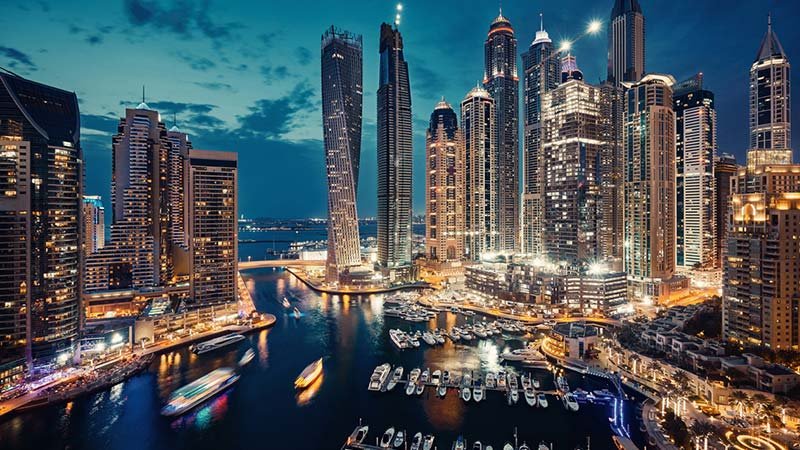The United Arab Emirates (UAE) has become a global hub for tourism, attracting millions of visitors each year with its luxurious resorts, towering skyscrapers, vibrant culture, and diverse attractions. From the breathtaking views atop the Burj Khalifa to the serene desert safaris, the UAE offers something for every traveler. Behind this tourism boom lies a well-thought-out strategy that has transformed the UAE into a tourism powerhouse. For countries like Nepal, which also holds immense tourism potential, there is much to learn from the UAE’s success.
1. Strategic Investment in Infrastructure—Backbone of Tourism in the UAE
One of the cornerstones of the UAE’s tourism success is its world-class infrastructure. The UAE has invested heavily in building modern airports, efficient transportation networks, high-quality hotels, and leisure facilities. Dubai International Airport, for example, is one of the busiest in the world, acting as a transit hub for millions of travelers.
What Nepal Can Learn: Nepal, known for its stunning landscapes and cultural heritage, can attract more tourists by investing in infrastructure. Improving roads, expanding airports, and upgrading hotels in key tourist destinations like Kathmandu, Pokhara, and Chitwan will make travel more accessible and comfortable. The Tribhuvan International Airport, Nepal’s primary gateway, needs further expansion to handle the growing influx of visitors.
2. Diversification of Tourism Offerings
The UAE has successfully diversified its tourism offerings. Beyond the traditional luxury market, the UAE promotes adventure tourism, cultural experiences, and eco-friendly activities. From dune bashing and skydiving to visits to the Louvre Abu Dhabi, the country provides varied experiences that cater to different types of tourists.
What Nepal Can Learn: While Nepal is famous for its trekking routes, including the Everest Base Camp and Annapurna Circuit, there is potential to expand beyond adventure tourism. Promoting cultural tourism, wildlife safaris, wellness retreats, and spiritual experiences (like visits to Lumbini, the birthplace of Buddha) can attract a more diverse group of travelers. Nepal should also develop more eco-friendly and sustainable tourism options, given its abundant natural beauty.
3. Marketing and Branding
The UAE has marketed itself as a premium destination, targeting high-end tourists while also making itself accessible to budget travelers. Campaigns like “Visit Dubai” and the use of social media influencers and celebrities have played a crucial role in positioning the UAE as a must-visit destination. The UAE’s tourism board has also forged partnerships with international airlines, tour operators, and media outlets to reach a global audience.
What Nepal Can Learn: Nepal needs to enhance its global marketing efforts to promote itself as a unique destination. A focused tourism campaign—such as a “Discover Nepal” initiative—could highlight the diversity of experiences the country offers. Collaborating with influencers, travel bloggers, and global travel agencies would also help increase Nepal’s visibility on the international stage.
4. Public-Private Partnerships
The UAE’s tourism growth has been supported by strong public-private partnerships. The government works closely with private entities like hotels, tour operators, and airlines to create a seamless experience for tourists. Events like the Dubai Shopping Festival and the Abu Dhabi Grand Prix are examples of how public-private partnerships have bolstered tourism.
What Nepal Can Learn: Nepal can benefit greatly from fostering stronger partnerships between the government and private sectors in tourism. Collaborations with airlines, hotels, local businesses, and international organizations can help improve service standards and attract investment. The private sector can also assist in developing tourist packages, organizing cultural events, and promoting local heritage.
5. Safety and Accessibility
The UAE places a strong emphasis on safety, ensuring that visitors feel secure throughout their stay. The government has put in place modern safety measures, highly efficient law enforcement, and health services, which makes tourists feel confident traveling throughout the country.
What Nepal Can Learn: While Nepal is generally considered a safe destination, further improvements can be made, particularly in areas like emergency services, healthcare for tourists, and disaster preparedness (especially given the country’s vulnerability to earthquakes). Nepal should also focus on ensuring that tourist destinations are accessible to people of all ages and physical abilities.
6. Sustainability in Tourism
Despite being a desert nation, the UAE is leading the way in sustainable tourism practices. Initiatives like the Masdar City project and eco-friendly resorts in Ras Al Khaimah demonstrate the UAE’s commitment to reducing its environmental footprint while still providing top-tier tourism experiences.
What Nepal Can Learn: Nepal, with its rich natural resources, can become a global leader in eco-tourism. By promoting sustainable travel practices, protecting its fragile ecosystems, and developing green tourism infrastructure, Nepal can cater to environmentally conscious travelers and protect its natural heritage for future generations.
7. Leveraging Events and Festivals
The UAE has become a major hub for global events and festivals, from international trade shows to music concerts and cultural festivals. Events like Expo 2020 Dubai and the Abu Dhabi Film Festival have drawn millions of visitors, contributing significantly to the tourism industry.
What Nepal Can Learn: Nepal can capitalize on its rich culture by organizing large-scale cultural and adventure events. For example, festivals like Dashain and Tihar could be marketed internationally to attract cultural tourists. Adventure tourism events, such as mountain marathons or eco-treks, could also bring in more visitors.
8. Focus on Customer Experience
The UAE is known for its focus on providing a seamless and luxurious customer experience. From top-tier hotel services to efficient visa processing, tourists are treated with utmost care, making them feel welcome and inclined to return.
What Nepal Can Learn: Enhancing the overall tourist experience should be a top priority for Nepal. This includes simplifying the visa process, improving tourist information centers, providing multilingual guides, and offering high-quality hospitality services. Ensuring that tourists have smooth and memorable experiences will encourage positive reviews and repeat visits.
Conclusion
Nepal is a country with extraordinary potential in tourism, thanks to its natural beauty, rich cultural heritage, and unique attractions. However, learning from the UAE’s tourism success can help Nepal take its tourism industry to new heights. By focusing on infrastructure, diversifying offerings, improving marketing, and enhancing customer experience, Nepal can unlock its full potential as a premier global travel destination. With the right strategies in place, Nepal can not only increase tourist numbers but also make tourism a significant contributor to its economic growth.





